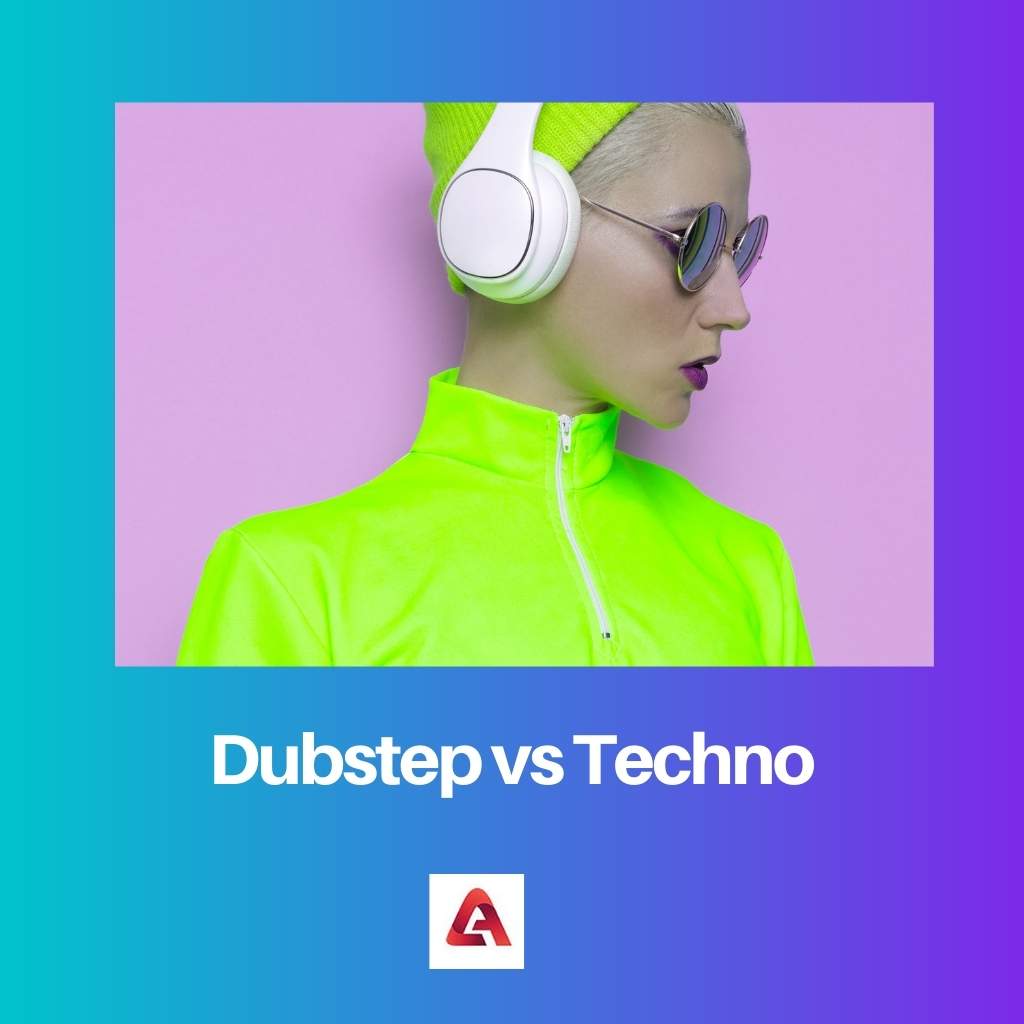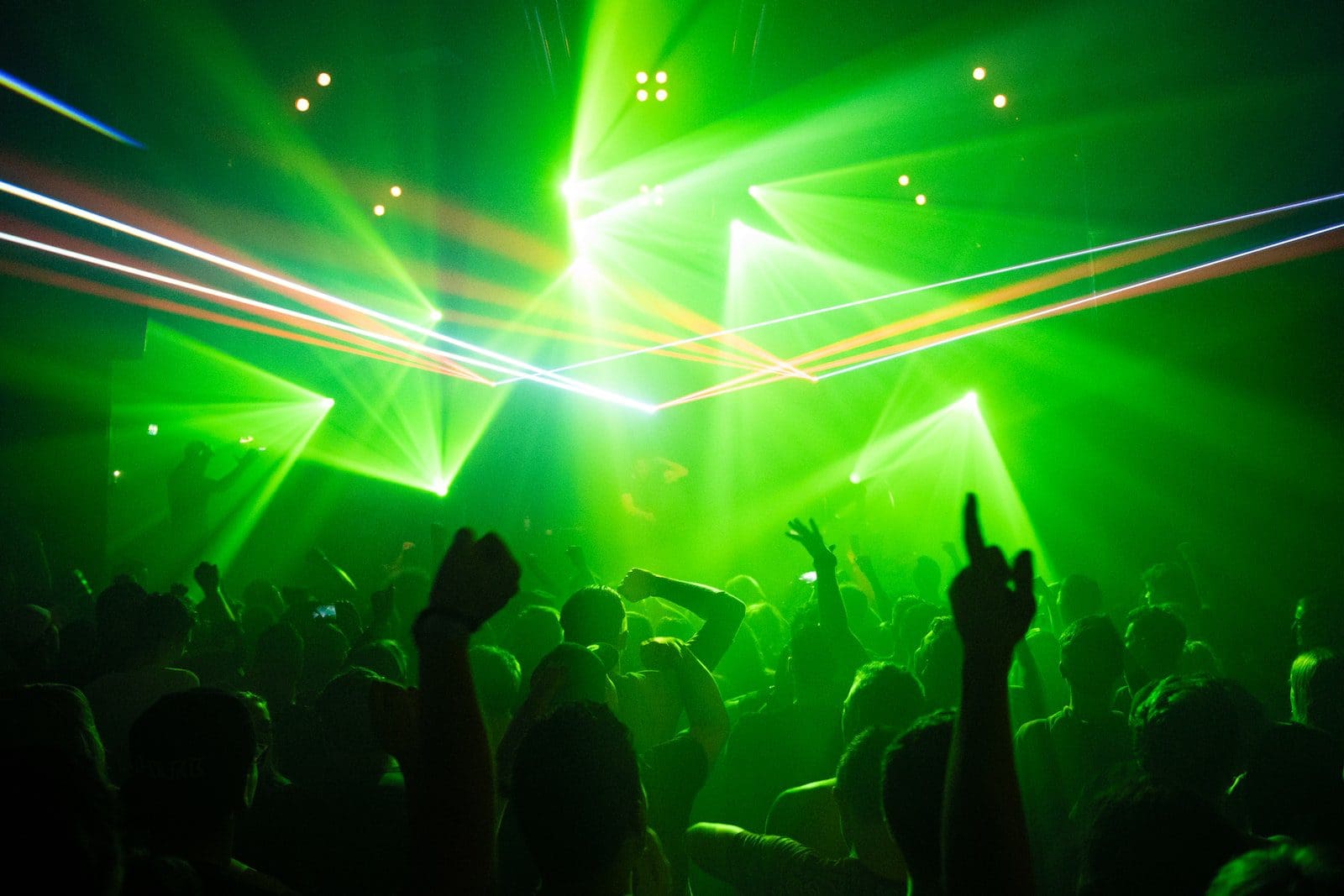In the world of electronic dance music, dubstep and techno are no amateurs. Along with dubstep and techno, there lies a third type of electronic dance music known as ‘house’ hence these are the pillars of electronic music.
Although dubstep and techno might sound similar to commoners, there are quite a lot of differences between the two.
Starting from their origins to the way they sound, the journey from dubstep to techno might define the whole symphony of electronic dance music ever created!
Key Takeaways
- Dubstep originated in London in the late 1990s, while techno emerged from Detroit in the mid-1980s.
- Dubstep features syncopated rhythms and heavy basslines, while repetitive beats and synthesized sounds characterize techno.
- Dubstep has a slower tempo, around 140 BPM, while techno’s tempo ranges from 120 to 150 BPM.
Dubstep vs Techno
The difference between dubstep and techno is that dubstep has a Jamaican and London origin and ranges to 140 bpm, whereas techno originated in Detroit, America, and is ranged to 145 bpm. Techno in the 90s was quite modernized, and it is characterized by a repetitive four-on-the-floor beat.

Dubstep, as the name suggests, it’s a Jamaican dub with a sequence of 2 beats that are synchronized to create a beat that ranges from 135-140 bpm.
It is quite famous amongst African and American dance music enthusiasts because of its unique bass lines and beat drops. It became popular when a nightclub named “Forward” showcased it for the first time in 2001.
The wobble isn’t present in older dubstep genres, which tend to sound more relaxed with loads of sub-bass, but the 4-to-the-floor beat is popular in newer dubstep, which features forceful drums and synths.
Whereas techno has an American origin and is much more creative with its sequential treble and consecutive beats. Modern techno is partially inspired by pop music and is more melodious.
The 4-to-floor aspect, along with the range 140-145 bpm, is still a distinct feature of techno dance music.
Comparison Table
| Parameters of comparison | Dubstep | Techno |
|---|---|---|
| Definition | A fusion of Jamaican dub and 2 steps beat drops. One of the major types of electro dance music. | A mechanical 145 bpm ranged music. It follows the 4 to floor beat-drops and is another branch of electronic dance music. |
| Origin | Originated from Jamaican dub music and South London. | Originated in Detroit, USA. |
| Year of fame | Dubstep gained its floor in the year 2001 although it was introduced back in 1988. | A rhythm-centric music and was originated back in the 1980s. |
| Focus and beats | Follows the 2-step breakbeat along with bass dips. The use of triplet rhythms and cross-rhythms is a signature too. | Rhythm and beat centric music with 4-to-floor pattern and treble synths. Beats increase eventually with less or no vocals. |
| Characteristics | Bass drops, lots of drums, wobble bass, and rewinds-strums. | Use of fast beats, usage of synthesizers, four-to-the-floor patterns. |
What is Dubstep?
A distinct type of electronic UK-based dance music originated from Jamaican dub music and South London.
Dubstep got its origin when a nightclub named “Forward” played it for the first time in 1988, and it eventually gained popularity in the year 2001.
In 2002, the genre of dubstep started to spread throughout America, and it got exponentially popular.
Distinguished by its 2-step rhythmic beat drops and bass-rewinds combo, dubstep is one of the most popular electronic music heard by music enthusiasts.
It is bass-line-based music with frequent beat drops along with 2 beat-break orientations of rhythm.
Dubstep manages to range from 138 to 142 beats per minute (bpm) and is enjoyed by people who love fast beats with some volumetric vocals.
Another signature feature of dubstep music is the use of low-frequency oscillators that produce wobble bass and is sometimes responsible for those bassline drops and emerging experience.
Some famous dubstep albums are listed below ;
- Ghost Rider – El-B (2007)
- Midnight Request Line – Skream (2005)
- Machine Gun – Noisia (2010)
- We Are Dust – Xilent (2019)

What is Techno?
Originating from Detroit, USA, in the late 1980s, techno gained ground along with dubstep.
With the touch of Ibiza and Spanish partial tunes, techno developed furthermore into acid house and rave (some types of techno EDM),
techno holds the essence of ‘do as you want and dates back to 1988 when it was more mechanical than musical.
The old techno beats resembled modern-style mechanical beats and tunes.
Modern techno is equipped with quite a lot of tunes and vocals, which make it sound energetic and much more melodious than its ancestors.
Techno is focused on rhythmic beats and sequential beat drops along with mechanical tones. Synthesizers are used to produce a variety of electronic genres.
Waveforms are generated by tone generators and filters in synthesizers.
Hip-hop EDMs had become Europe’s most popular kind of dance music by 1988, with Acid House becoming a consistent pattern in the United Kingdom and Germany the same year.
Techno has a signature 135-145 bpm trend and sticks to pop-inspired notes, especially the modern techno, unlike its predecessor, which was more “futuristic” than melodious.
Techno doesn’t have vocals because the essence of techno lies in its music, not its songs and lyrics.

Main Differences Between Dubstep and Techno
- Dubstep originated in South London and the Jamaican provinces, but techno originated in Detroit, USA.
- Dubstep was first released in 1988 and gained popularity in 2002, whereas techno started its spread in the 1980s and eventually gained popularity.
- The 2-step breakbeat is a signature of dubstep, whereas the 4-step-to-floor is the signature feature of techno music.
- Dubstep ranges from 130-140 bpm, whereas techno can reach up to 148 bpm and is significantly faster.
- Bass drops, a lot of drums, wobbling bass, and rewinds are all hallmarks of dubstep, whereas rapid rhythms, synthesizers, and four-to-the-floor patterns are all features of techno.
- https://study.com/academy/lesson/what-is-dubstep-music-definition-types-artists.html
- https://www.liveabout.com/what-is-dubstep-1013080

The detailed descriptions of dubstep and techno are very informative. I appreciate the historical context provided for both genres, and how their characteristics have evolved over time.
The history and defining features of dubstep and techno are effectively explained in this article. It’s fascinating to see how each genre has developed its own unique sound and style.
I found the section about the origins and characteristics of dubstep and techno to be quite insightful. It’s evident that both genres have their own unique traits and influences.
The comparison between dubstep and techno is well-presented and provides a comprehensive overview of the differences between the two genres. It’s clear that both have distinct styles and origins.
Thanks for the informative article! It’s interesting to see the evolution of electronic dance music and the distinctions between different genres.
This article does a great job of explaining the origins and characteristics of dubstep and techno. I found it particularly fascinating to learn about the use of low-frequency oscillators in dubstep music.
The historical background of dubstep and techno is well-presented in this article. I hadn’t realized the Jamaican and London origins of dubstep, and the American roots of techno.
The explanation of the distinct features of dubstep and techno is clear and concise. It’s interesting to see how the two genres have evolved over time and how they differ in terms of tempo and beats.
The detailed descriptions of dubstep and techno are very enlightening. I enjoyed learning about the unique characteristics and features of each genre.
I appreciate the in-depth comparison table provided. It really helps to highlight the key differences between dubstep and techno, especially for someone new to electronic dance music.